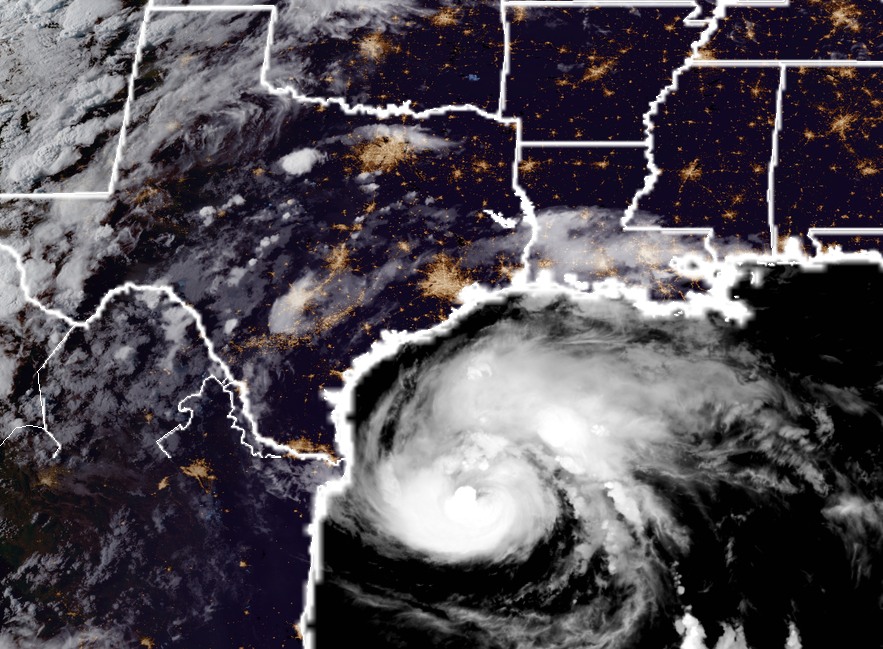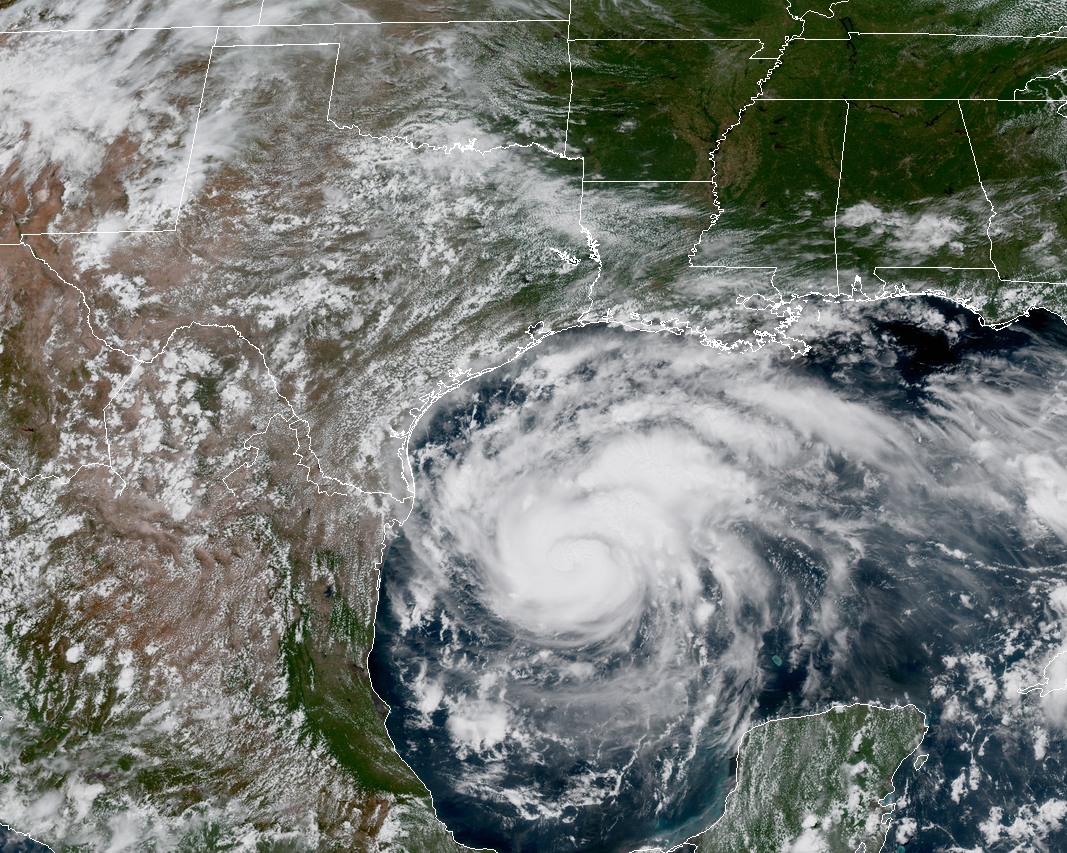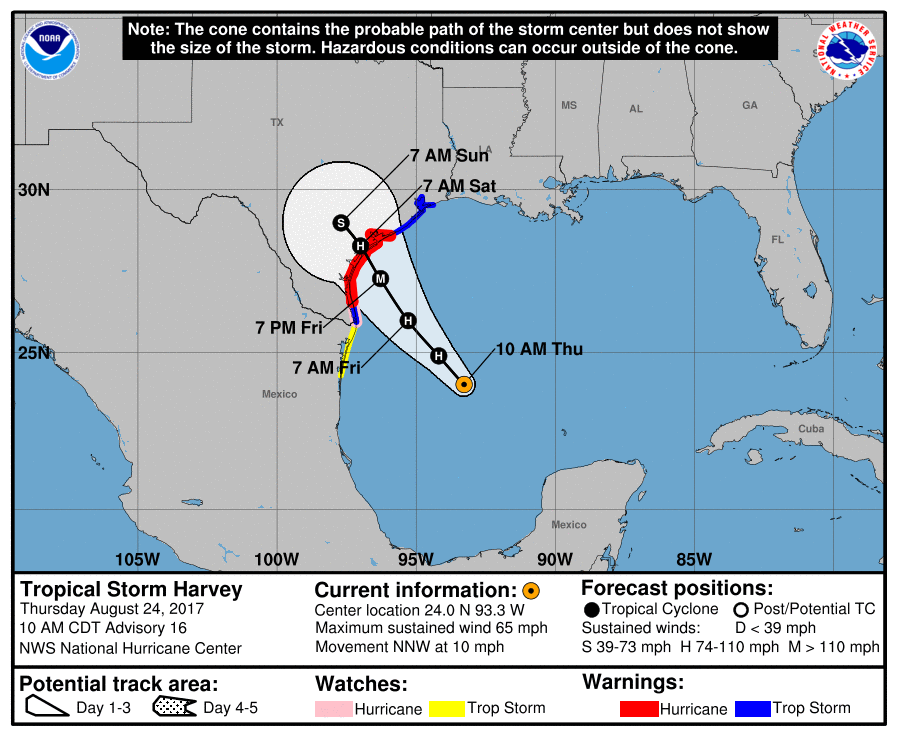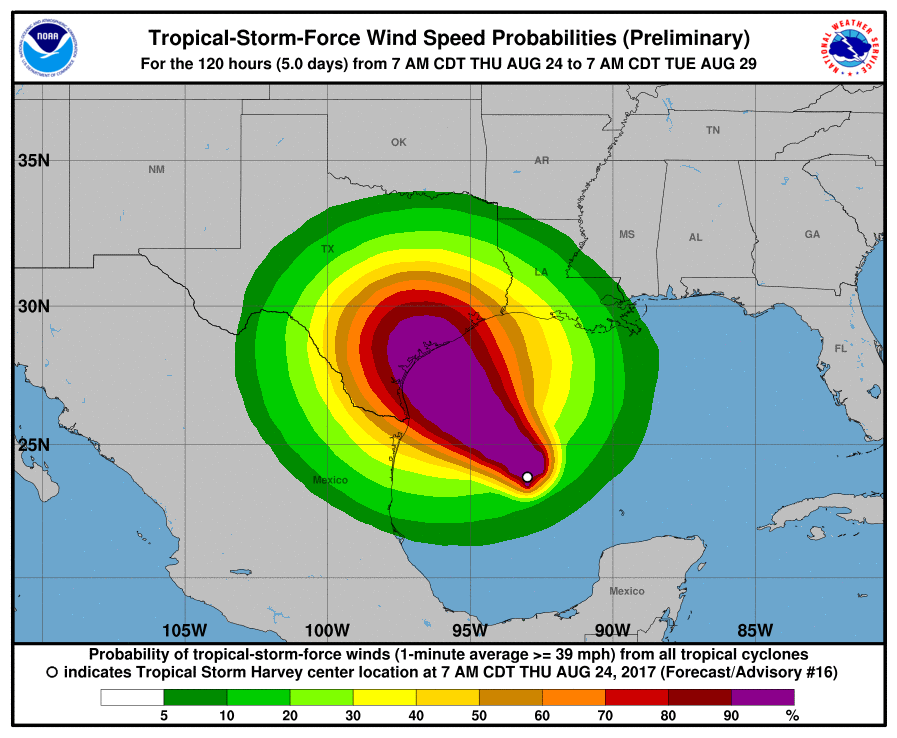Good morning, everyone. After an overnight lull in strengthening, perhaps caused by some dry air working its way into the circulation of Hurricane Harvey, the storm has begun intensifying again. As of 6am CT it had sustained winds of 110 mph, but with the central pressure continuing to fall, the storm’s winds will almost certainly increase. For Texas, there will be two epochs of Harvey: the catastrophic effects from wind and surge during the next day or so for the central Texas coast, and the unfolding, widespread, major flood event from Saturday through the middle of next week for a large swath of the state, including Houston. We will discuss both this morning.
Wind and Surge
We remain confident in the forecast track for Harvey during the next 24 hours, as it moves northwest across the Gulf of Mexico, and comes ashore somewhere near Port Aransas. If you live in, or have property from Rockport to Matagorda, preparations for devastating winds—probably about 120 mph sustained, but maybe higher—should be completed by early this afternoon.
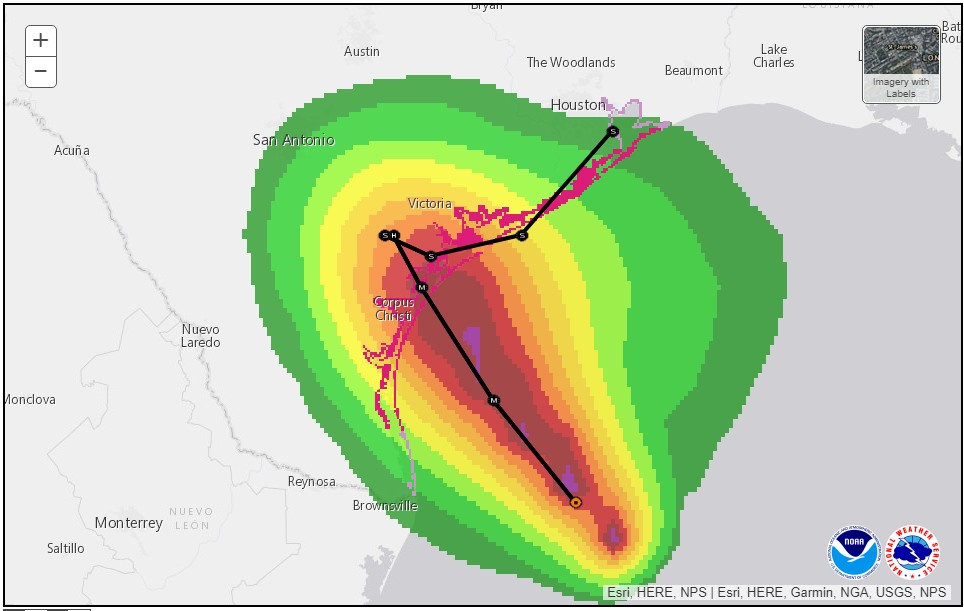
Storm surge will be a major problem for low-lying coastal areas. According to the latest National Hurricane Center storm surge forecast, the following numbers represent the realistic “worst case” inundation. This means the depth of water above the ground. You can visit the site itself to zoom in to any location along the Texas coast.
- Mustang Island to Sargent, including Matagorda Bay: 6-12 feet
- Sargent to Jamaica Beach: 5-8 ft
- Jamaica Beach to High Island: 2-4 ft
- Galveston Bay (Seabrook, Shoreacres, Nassau Bay, Kemah, San Leon) 2-4 ft
For Houston, aside from the above surge numbers, the effects from the immediate landfall of Hurricane Harvey will be relatively modest. As we’ve discussed, winds Friday night and Saturday morning should be manageable, although some areas may briefly see some tropical storm-force winds. The power grid is designed to withstand these conditions—so hopefully most of us will keep the lights on.

